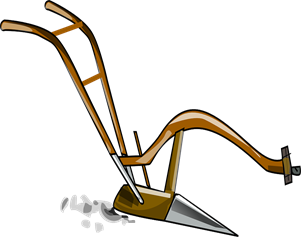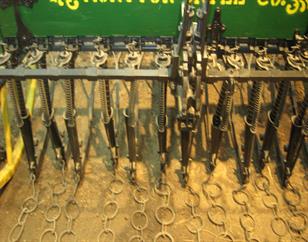PDF chapter test TRY NOW
The soil preparation is the first step before growing a crop.
One of the most important tasks in agriculture is to turn the soil and loosen it.
One of the most important tasks in agriculture is to turn the soil and loosen it.
The process of loosening and turning of the soil is called, tilling or ploughing.
This is done by using a plough. Ploughs are made of wood or iron, as shown in the picture. Nowadays, tractors with attached plough is widely used.

The following are the benefits of turning and loosening the soil:
- This allows the roots to penetrate deep into the soil and breath easily.
- The loosened soil also helps in the growth of earthworms and microbes present in the soil. These organisms are friends of the farmer since they further turn and loosen the soil and add humus to it.
- When the soil is loosened and turned, plants get fresh supply of nutrients which are again absorbed by plants.
Sowing
Once the soil is turned well and loosened, it will be ready for sowing the seeds.
Before sowing, good quality, healthy seeds are selected to get high yield, this is called, seed selection.
Before sowing, good quality, healthy seeds are selected to get high yield, this is called, seed selection.
Generally, it considered that seeds which sink in water has good quality than the one that floats. However, this may not be applicable to all seeds.
There are a variety of sowing machines available; they are popularly known as seed drills. The seeds filled in the drills get sown in equal distance in the ground.

Some plants are first grown in a separate plot for initial nurturing and transplanted later on to the actual field. This process is known as transplantation. Paddy is a suitable example for this method.
Reference:
Image courtesy :
Plough - https://www.clipartmax.com/middle/m2H7H7N4G6K9N4H7_file-wikivoc-plough-svg-local-technology-of-nepal/ (Free image)
Seed drill - image source - https://www.wikiwand.com/en/Seed_drill (Free image)
